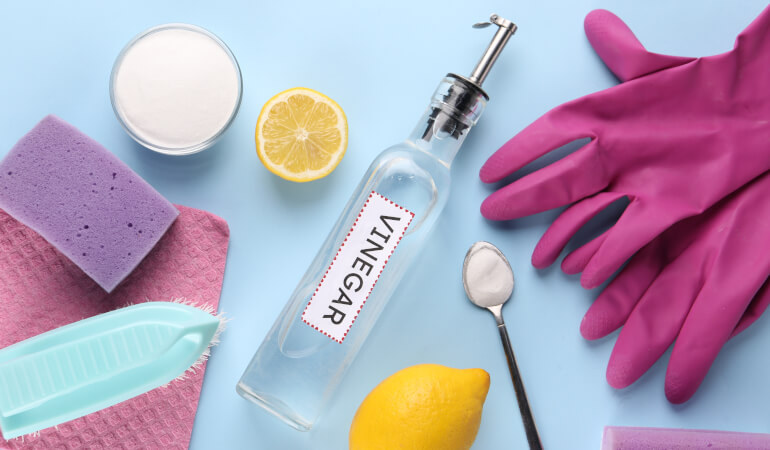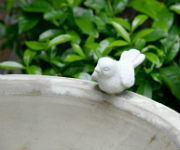
Natural cleaning is quietly reclaiming its place in most homes. Many are searching for simpler and safer options to maintain their houses germ-free.
Vinegar, once reserved only for chips or as a drizzle on salads, has evolved into a multi-purpose cleaner. Malt vinegar, in particular, has begun raising a few curious brows. Many wonder, “Can you use malt vinegar for cleaning effectively around the house?”
This guide takes a closer look at what malt vinegar actually is, how it works, where you can use it and where it falls short.
Table of Contents
What is malt vinegar?
Malt vinegar begins its life as malted barley, brewed into alcohol before being fermented into something sharper. It shares DNA with beer, which explains its deep aroma and full-bodied taste.
There are two main types worth knowing. Brown malt vinegar is thick, bold, and famously found on shop counters. While it adds punch to fried food, it isn’t ideal for cleaning due to its tendency to stain.
Distilled malt vinegar, on the other hand, is the paler cousin. It’s more subtle in scent and safer for light-coloured surfaces, and its acidity is around 5%.
Distilled malt vinegar uses include dissolving limescale, cutting through grease, reducing odours, and eradicating germs along the way.
It’s a friendly option in homes with pets, kids, or anyone who’d rather not inhale mystery chemicals. Beyond that, malt vinegar is biodegradable, glass-bottle friendly, and comes with a pleasantly low price tag.
Is malt vinegar the same as white vinegar?
They might share shelf space at the grocery store, but these two are quite different. White acetic acid, sometimes called spirit vinegar, is a clear, mild-smelling liquid. Its neutral appearance and gentle scent mean it won’t leave noticeable residue.
The malt variant, particularly the darker types, has a more robust flavour and colour thanks to how it’s brewed. That richness, while great in a gravy, can cause issues on light surfaces.
White vinegar is perfect for windows, floors, tiles, and inside appliances. Distilled malt vinegar can handle many of the same jobs but may need a rinse or two more.
The question remains, though: Is distilled malt vinegar the same as white vinegar when it comes to cleaning? To be fair, white vinegar still reigns supreme for cleaning, but if you’ve only got malt, you’re not out of luck.
When is malt vinegar safe for cleaning?
Distilled malt vinegar has plenty to offer, as long as you know when to use it. In kitchens, it can handle grease on counters, remove streaks from stainless steel, and refresh chopping boards. A little in the bin also helps take the edge off unwanted smells.
Bathrooms are another great use case. Limescale hates acid, and malt vinegar has just enough to keep taps, tiles, and toilets pristine. Pouring a splash down the sink can also revive a sluggish drain.
It works on mirrors and glass, too, as long as it’s watered down and wiped properly. It also works on laminate floors and helps clean walls. Moreover, kettles benefit from a boil with half vinegar and half water, followed by a few good rinses.
To deodorise a musty space, leave out a bowl overnight and let it work its magic. It even tackles rust if you’re patient. Just soak the surface, scrub it, and repeat the process if needed.
Cupboards and pantry shelves that have gathered dust and sticky spills can also benefit from a quick wipe-down using diluted malt vinegar. It lifts residue without leaving a harsh chemical smell behind.
Even when it comes to cleaning windows and furniture, malt vinegar can help. Dabbed onto a cloth, it clears panels and neutralises odours from fabric upholstery. Keep the solution light, though, and test it on an inconspicuous spot first.
For a quick fabric refresh, lightly mist upholstery with a diluted mix. Let it dry with the windows open. The acidic smell fades faster than you’d expect.
If you’re wondering whether you can use distilled white malt vinegar for cleaning a washing machine, the answer is yes. Run a hot cycle with a cup of it in the drum to help dissolve residue and freshen things up.
In addition, if you’re tackling mould in grout or damp corners, malt vinegar can help with that, too. Apply it to these areas, leave it to sit for 10-15 minutes, scrub, and finally rinse thoroughly. Just don’t use it on surfaces that can be easily scratched or stained.
Practical tips for using malt vinegar for cleaning
When unsure, water it down. Malt vinegar is natural, but it’s still acidic, and too much can cause more trouble than it solves.
For all-purpose use, mix equal parts distilled malt vinegar and warm water in a spray bottle. It works well on countertops, fridge shelves, and bathroom tiles. For tougher grime, use it undiluted, let it sit, and then scrub with something non-scratchy. When unblocking drains, pair it with baking soda and enjoy the fizz before flushing it clean.
If the smell puts you off, a few drops of essential oil can make things more pleasant. Citrus and eucalyptus work a treat, and they don’t interfere with the solution’s efficacy.
When it comes to storing your mixes, always label the containers and keep them somewhere cool and shaded. Don’t forget to give the bottle a shake before each use as well to keep the ingredients well-blended.
You don’t need to overhaul your cleaning routine to include malt vinegar. It’s easy to substitute it with what you’d usually use as a general-purpose spray.
Need an experienced helping hand for the household chores? Find it right here!
Enter your postcode to view our rates and availability in your area.
For questions about the services we offer visit our main site
When NOT to use malt vinegar for cleaning?
Malt vinegar might seem like it can do it all, but it does come with a few caveats.
So, what is the disadvantage of vinegar in cleaning? The darker brown malt vinegar is widely and unfavourably known for leaving stains behind.
It doesn’t get along with clothes, pale grout, or porous tiles, and it can easily leave marks you never meant to make. Even the clear version has its limits and should always be rinsed off properly if used on light surfaces.
Natural stone, like marble or granite, is a definite no. The acid can wear away sealants and strip the surface of its shine before you know it. Electronics and screens are best left untouched, too, as vinegar can eat away at coatings and creep into tiny components.
While it isn’t a common question, if you’re wondering whether you can use white malt vinegar for cleaning clothes, the answer is no. The scent is far too strong, and it can leave odd patches on light-coloured fabrics.
Takeaways
- Distilled malt vinegar tackles grease in the kitchen, streaks in the bathroom, and odours from bins as well as furniture;
- When used correctly—usually diluted—it’s a low-cost, pet-safe, and biodegradable option for everyday maintenance and deep cleaning;
- It’s surprisingly versatile, handling jobs from descaling kettles to cleaning pantry shelves and clearing foggy windows. You can even use it to fight mildew in corners;
- Pair it with baking soda for drains or essential oils to improve the scent;
- Don’t use it on natural stone, delicate electronics, or porous materials;
- White vinegar may remain the all-rounder, but if distilled malt vinegar is what’s on hand, you’re far from stuck. It’s a capable cleaner that deserves a place on your shelf.









Leave a Reply